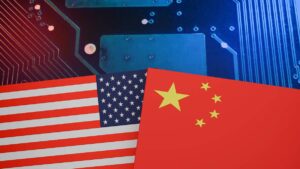Here’s how much of Australia’s iron ore China bought last year (Hint: a lot of it)

China's post-COVID infra push resulted in strong demand for Australia's iron ore exports. (Pic: Getty)
Trade tensions didn’t dampen China’s enthusiasm for Australian iron ore last year, new data from CBA confirms.
2020 turned into a tumultuous year with Australia’s biggest export partners, as various political disputes took centre stage in the wake of the COVID-19 pandemic.
But while policy responses to the pandemic varied from country to country, Chinese authorities took the opportunity to double down on a huge infrastructure push.
That in turn fostered increased demand for steel, and as a result Australia’s iron ore trade was “relatively unscathed”, CBA commodity analyst Vivek Dhar said.
“That likely reflects China’s strong dependency on Australia for its iron ore needs,” he added.
How much iron ore did China buy in the end? Of all the iron ore Australia shipped in the 12 months to the end of January, China acquired 81 per cent of it.
The next two biggest customers were Japan and South Korea, with six per cent each.
Strong demand out of China combined with ongoing supply issues from Vale’s Brazil operations combined to send iron ore prices rocketing above $US150/tonne last year (from a long-term average below $US100).
That was good news for Australia’s major iron ore producers (check out Twiggy’s dividend), and the federal budget (which took a battering to shield the economy from COVID-19).
And so far, they are staying there, with prices still holding around $US160/t this week.
However, Stockhead’s Mike Cooper noted this week that futures markets have come under some mild strain, following news that a group of seven Chinese steel producers in the Tangshan region (east of Beijing) have been instructed to reduce their emissions by 50 per cent from late March to June 30.
Longer term, the biggest threat to Australia’s iron ore exports will come from “decarbonisation of the steel sector”, Dhar said.
China has flagged plans to achieve net-zero emissions by 2060, while Japan and South Korea are gunning for 2050.
Over the next few years, the only way to get steel emissions lower will be to focus on higher-grade iron ore, and the expansion of scrap-steel industries Dhar said.
Carbon-free steel production is also on the table, with clean hydrogen and molten oxide electrolysis emerging as the two tech front runners.
“However, we’d need to wait until much later this decade to know what carbon-free pathway for steel is technically and economically viable,” Dhar said.
UNLOCK INSIGHTS
Discover the untold stories of emerging ASX stocks.
Daily news and expert analysis, it's free to subscribe.
By proceeding, you confirm you understand that we handle personal information in accordance with our Privacy Policy.








